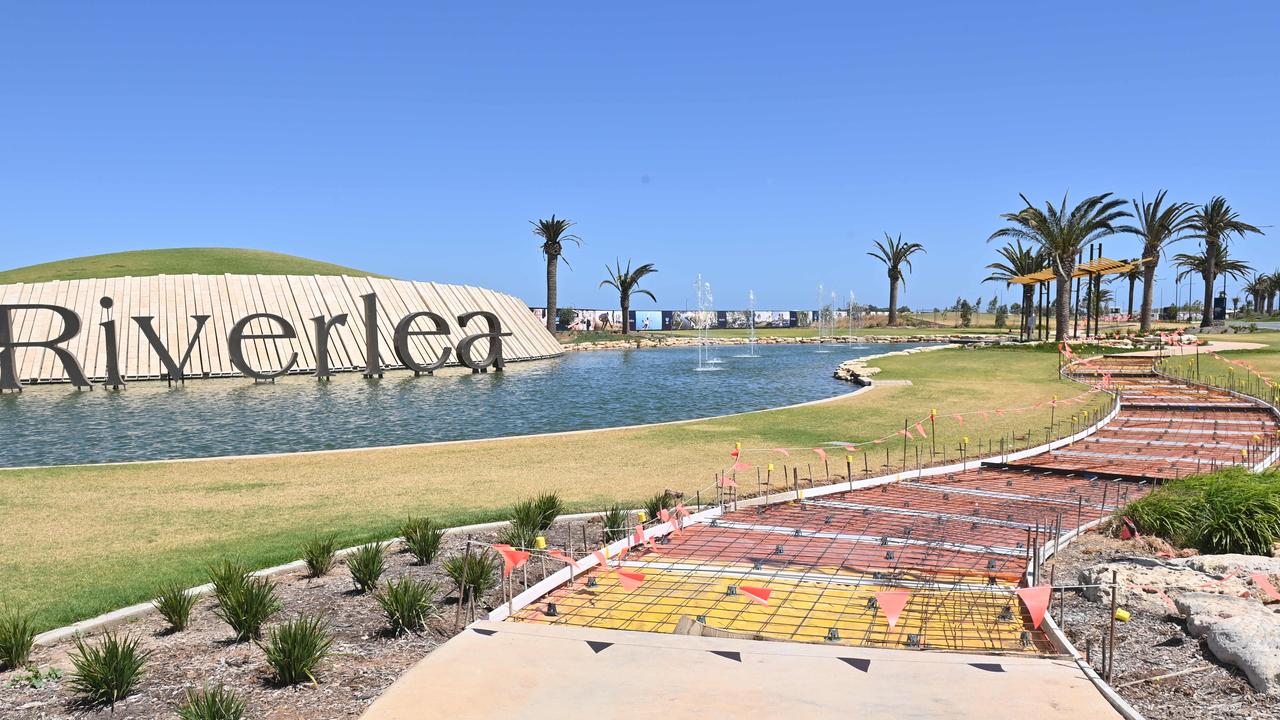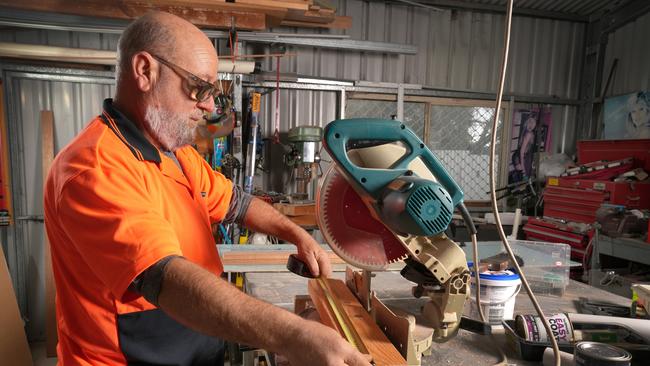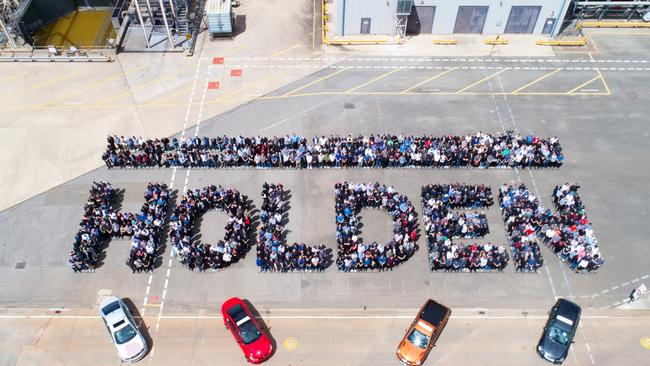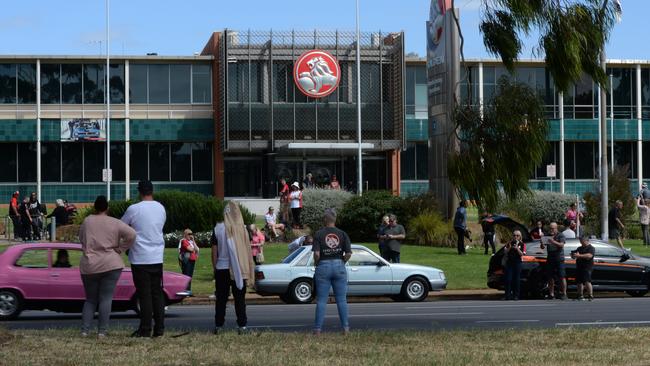Life after Holden: Inside the job boom in Adelaide’s north
It’s been seven years since the final car came off the line at Holden in Adelaide and now the northern suburbs is finding its feet and brimming with big pay opportunities.

SA Weekend
Don't miss out on the headlines from SA Weekend. Followed categories will be added to My News.
Damon Anderson is one of the new generation of workers from Adelaide’s northern suburbs who has a plethora of career choices and employment opportunities awaiting him.
Where once a young school leaver would be told “you can always get a job at Holden”, now they are presented with jobs in many fields – and there are more positions being created every day.
Whether it is a profession or a trade, the new and growing industries that are hiring range from construction, health and community care and food production to defence, logistics and advanced manufacturing.
Manufacturing is now the fourth-largest employing industry in northern Adelaide, after topping the list in 2011. The healthcare, retail and construction sectors are the top three.
Thanks to these new employment opportunities, almost a third of all South Australians who have found jobs since the Holden factory announced its closure just over a decade ago have hailed from the northern suburbs.
For Anderson, 20, pursuing a trade was always the plan. As the son of a fitter and turner, he had intended to follow in his father’s footsteps until a career seminar at high school put another apprenticeship pathway on to his radar.
“I was doing a Certificate II in Engineering Pathways (as part of vocational studies at school) when this opportunity came up and it was too good,” he says.
Anderson’s boilermaking apprenticeship at BAE Systems, working at the Osborne Naval Shipyard, was the first job for which he applied.

Now three years into his training, Anderson enjoys the job satisfaction in being able to see what he has made with his own hands.
“I love welding; welding is good fun,” he says. “It’s great money, great people, great work, great equipment. It’s the spot to be.
“All my mates are tradespeople. One friend is here. I’ve got a couple of friends who are boilermakers, a chippie, electricians.”
The Holden closure – and a new era
The Holden factory closure announcement in December 2013 had many South Australians predicting doom and gloom for the region of Adelaide located north of Gepps Cross, which already had a bad reputation for suffering from high unemployment.
And while the unemployment rate still stubbornly remains a little higher than other regions of the state, it has almost halved in the past decade, falling from 8.2 per cent to 4.9 per cent.
It is a stark difference from the doubling of the unemployment rate that many commentators predicted would occur at the time of Holden’s closure.
Instead, the north has been the powerhouse for employment growth in South Australia.
While Australian Bureau of Statistics data shows the number of employed people statewide has grown by 16 per cent since the news broke that the Elizabeth factory would close, the number of northerners employed has grown by 21 per cent. It is the highest growth rate of any Adelaide region.

City of Playford mayor Glenn Docherty says the north is flourishing without Holden and is poised to continue flourishing well into the future.
“I think the big fear that everybody had at the time was that there’d just be a padlock on the gate and the site would be rendered useless,” he says of the factory closure.
“We’d seen the pictures from Detroit (the home of car manufacturing in the US), some of the issues that they’ve had in previous decades from closing of car plants. But between the government, business councils and the community, we were steadfast in making sure that wasn’t going to be the outcome for northern Adelaide.
“I think at the time there was a lot of community shock and disappointment that the car industry was going to close, and it kicked the government and community into gear about what the future of life would be like in the northern suburbs post the closure of Holden.”
The Holden factory site itself provides examples of the new industries that have been established in northern Adelaide.
The rise a new industries in Adelaide north
Now called Lionsgate, the 123ha site is home to advanced manufacturing, defence, renewable energy and community services.
However, from Gepps Cross in the south to the expanses of Greater Edinburgh Parks and beyond, businesses are setting up shop as well as expanding operations.
“The northern Adelaide region is the economic epicentre for the future of South Australia,” Docherty says.
“People are moving in at a rate of knots and it’s one of the fastest growing-communities in South Australia and one of the fastest growing communities in the country.”

Population growth is one reason for the recorded employment growth.
New housing developments in Two Wells, Virginia, Angle Vale and Munno Para, as well as Riverlea Park, are drawing young people and families to the region.
“Riverlea is going to be the size of Mount Gambier and the impact that Riverlea will have on metropolitan Adelaide will be what Elizabeth had on Adelaide back in the 1950s,” Docherty says.
Fifty-two per cent of people now living in the north are of prime working age – between 15 and 44 years – says University of Adelaide’s SA Centre for Economic Studies honorary research fellow Michael O’Neil.
However, the associate professor says it is not a case of people living in the north and commuting to other regions to work.
With population growth comes new jobs in service industries, ranging from healthcare to retail, as well as housing construction jobs.
“If we think for the whole area of housing, construction, building, it’s just going to be a pressure point for Australia, South Australia and this region as well,” O’Neil says.
“So all of those trades – carpenters, electricians, plumbers, etc – are going to be in demand.
“The other great thing about it is, as young people mature, they can start their own businesses as well, or become independent.”
However, O’Neil says major projects such as the construction of the Northern Connector and the electrification of the Gawler rail line also created employment opportunities. Defence is also well-established, with companies such as SAAB, Lockheed Martin and Raytheon joining BAE Systems to make the industry a significant employer – so significant that in suburbs such as Mawson Lakes, where many of them are headquartered, the unemployment rate is as low as 2 per cent, O’Neil says.
He says of defence … “in a sense, it’s bigger than Holdens” but rather than being a replacement, it is the icing on the cake when it comes to employment opportunities – and many of those are well paid.
Defence, shipbuilding and trades
“This area of defence – construction of defence vehicles, shipbuilding – that’s going to demand a lot of metal trades, technical and electrical workers, so the trades area I think is one that’s really important,” O’Neil says.
“The aged-care area, community care, NDIS is another area of really strong growth, including childcare as well, and then the normal retail trades, sales, wholesale trade business on the back of population growth.
“The whole Virginia Plains has been a great agricultural area in South Australia, with market gardens and so on, and there’s a lot of ongoing employment in that.
“So it’s really going to extend right through all the professions.”
O’Neil says many younger employees at Holden made use of the training and reskilling that was offered, or had obtained apprenticeships through the car manufacturer, so were snapped up after the factory closed.
“If I look at December 2017, for Davoren Park, Elizabeth, Elizabeth East, Salisbury and Salisbury East, the average unemployment rate there was 12.1 per cent. It’s now 7.2 per cent, so it’s dropped very significantly,” O’Neil says.
“Munno Para was 7.2 per cent. It’s now 3.8 per cent. So people have been employed in an expanding defence industry, they’ve been employed in construction, housing, then they’re employed in all those industries that follow population growth, right through to cafes, restaurants, pubs, retail, shopping, schools, aged care, the health precinct at Lyell McEwin Hospital.
“It’s a story of ‘it did not collapse’.”

In its 21st century heyday, Holden’s Elizabeth factory employed more than 5000 people across three shifts.
The third shift was axed in 2005, then cuts were made to the workforce again in 2007. About 1700 people had jobs when the factory closure was announced in 2013, and by the last day in October 2017, about 950 workers remained.
Haro Matikian was one of the first Holden factory employees to accept a redundancy package in 2007.
The panel beater had gone to work for the motoring giant in 1988, after completing his apprenticeship, because of the job security it offered.
But Matikian applied to leave after 18 years, while he felt he was “still young enough in my heart to do something different”.
“They let me go, which was lucky,” he says.
“I could see the light that Holden was going to shut. I took (the redundancy payout) which gave me a helping hand to pay the house off.
“I could start a fresh life again – so it was a good thing.”
Matikian left with a new career plan in mind. He took advantage of the retraining offered as part of the redundancy package to obtain his contractor’s and supervisor’s licence and started his own business in general maintenance, working as a handyman.
A few years later he returned to study, completing a Certificate IV in Building and Construction and obtaining a restricted builder’s licence.
Now 60, he is hired by builders to complete the final touches and repair touch-ups on new builds, and his business turns over more than $100,000 a year.


Matikian takes pride in being able to drive a new work vehicle stocked with new tools and has been able to buy an apartment in Kent Town, in addition to his home at Ingle Farm.
“I reckon (the Holden job) was the best thing in my life,” he says.
“I love my (current) job. Every day is different. And it gives me the lifestyle I want.
“The knowledge they gave me was not just the automotive side but the life skills; they’re very similar skills required to run a business myself.”
However, Matikian knows times have not been so prosperous for some of his colleagues.
One of the biggest adjustments former factory workers have needed to make is the modern employment landscape.
A “job for life” is not as common as it used to be
“Some of my friends retired and a lot of the others are not struggling, but they’re not as good as they were when they were at Holden,” Matikian says.
“Some have never held a full-time job for long – it’s been more casual.
“That’s the biggest problem for a lot of them.
“But it’s probably not like it used to be, either. A lot of them haven’t landed with a full-time job that they expected to get because it wasn’t out there.
“At first, a lot of guys were struggling because the real world is different to when you’re in a company for a long time.
“A lot of guys got on with life and moved forward. Some didn’t want to.”
Matikian points out the Holden factory’s closure affected more than those working in the automotive industry.

Whether it was the Balfours pies and Coca-Cola drinks sold in the canteen or the toilet paper and soap used in the bathrooms, many products went into running the factory, and their suppliers were affected, he says.
O’Neil says 750 businesses were initially identified as being affected by the closure in some way, so to come through the other side with the best employment growth in the state is a significant achievement.
However, he says one challenge now being faced is the skills mismatch.
O’Neil says a strong emphasis needs to continue for people to pursue education and training – in particular apprenticeships – to equip them with the skills employers require.
Docherty says plans such as the state government’s Northern Economic Plan and his council’s Playford Community Vision 2043 strategic plan have been instrumental in addressing many challenges.
To keep up the momentum, unlocking land for industrial and commercial use is now on his radar, to create even more job opportunities.
“That does a couple of things. That then gives the opportunity for new industries to move in and existing industries the chance to expand their operations and build better purpose-built facilities,” Docherty says.
“It also allows other industrial developments in metro Adelaide to move a bit further out into better purpose-built facilities and unlocks that land closer to the city for further residential, commercial or other investment.
“So we’d like to see the South Australian government and the federal government work with the councils in the north to unlock that opportunity.”

In fact, state government modelling reveals 95 per cent (1732ha) of land earmarked for future industrial zoning is located in the outer north region, such as Greater Edinburgh Parks.
But there is still opportunity for infilling. For example, Parafield Airport land is rapidly being taken up by retailers while Haigh’s is moving chocolate production from Mile End and Parkside to a new factory at Salisbury South.
It provides much more choice and diversity for workers today, instead of the old adage of “just get a job at Holden”.
“Obviously car manufacturing had a lot of employment opportunity at the time and helped grow the City of Elizabeth throughout its iteration in life,” Docherty says.
“But the community is also one that knew that there would be other opportunities, and that they would work together to grasp those.
“And that’s probably one of the proudest things, I think, to have come out of this process, is the community’s ability to get on with a job.”
As for young Damon Anderson, his immediate plan is to finish his Certificate III in Engineering Fabrication and his apprenticeship to become a boilermaker, but he hopes to study further and to become a project manager at BAE Systems.
“They’re going to have work til I retire, so that’s heaps good,” the 20-year-old says.





